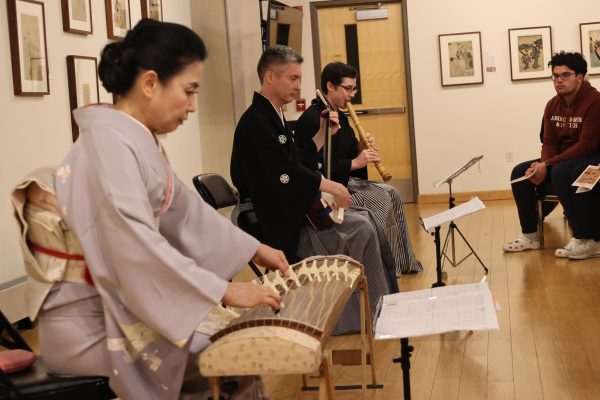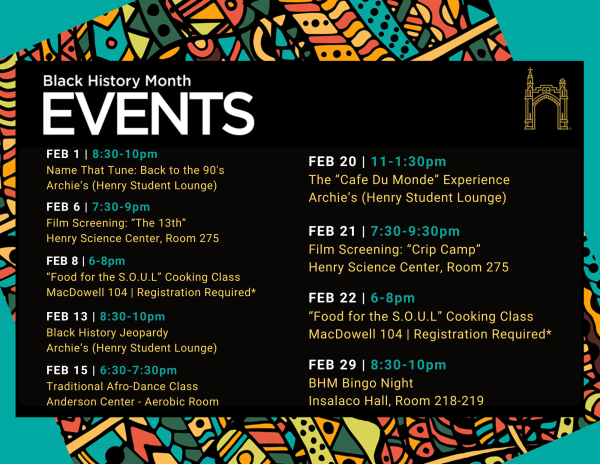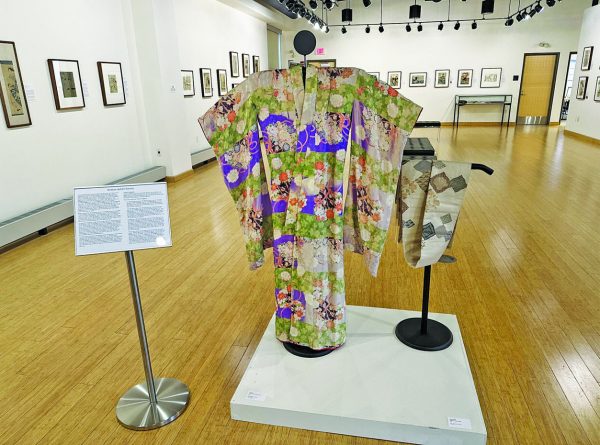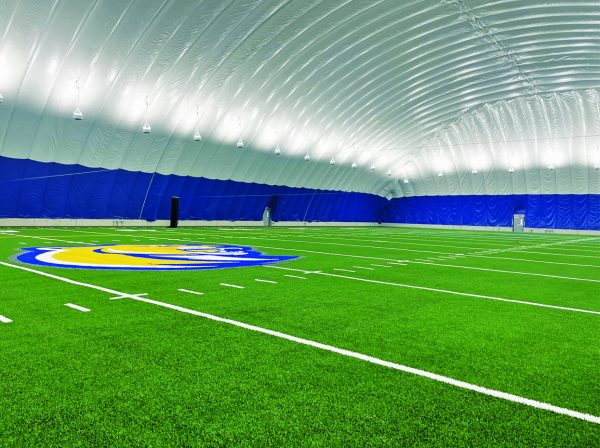Diversity Numbers Grow, Strengthen Culture

Fomr right to left: Student Kassie Cebula and Assistant Director of Enrollment Management Cheyne Wago meet in the hall of admissions department.
November 3, 2017
New student numbers are increasing, and that is having a positive effect on campus culture, officials say.
Admissions staffers have focused recruiting efforts on increasing student diversity in areas such as ethnicity, race, gender and sexual orientation. They also aim to increase diversity in more intangible areas, such as perspectives, viewpoints, socioeconomics and geographical origin. Staffers say they also put emphasis on academic interests. About 50 percent of new students select health sciences majors, and staffers attempt to recruit students for other majors as well.
“Socioeconomics has been a significant focus of enrollment management in past two years, finding ways to allocate additional aid to students with less means, to make it more affordable to a broader swath of students financially to come to Misericordia,” said Glenn Bozinski, Vice President of Enrollment Management..
As of the last few years, incoming classes reflect greater diversity. Prior to 2015, the university had never enrolled a class that had more than eight percent students of color. In comparison, the last three incoming classes have included 14 percent, 13 percent, and 11.7 percent students of color, respectively. These numbers almost double the ethnic and racial diversity of incoming classes. Currently, 11.3 percent of full time students are of diverse ethnic backgrounds. That is up from 8% in 2014 and 6% in 2007.
Gender ratios have also shifted in the past few years. While the university began as a female-only college, it became co-educational in the 1970s. One recent turning point in gender diversity occurred after the “football class of 2012,” as many students commonly call it. The university’s football program began in 2012, which lead to an increased recruitment of male students. Before that class, recent incoming classes had 68 percent female students to 32 percent male students. Following the 2012 class, the number of male students jumped 6% to 38%. Nationally, there are more female college students than males – about 53% of all college students are female, so the ratio of female to male students is statistically likely to be skewed at any university. However, over the last few years, Misericordia has continued to grow closer than ever to a more balanced gender mix.
The university offers a variety of resources to the diverse student body, including the Multicultural Education office and the ALLY Program Students may also be awarded scholarships related to diversity, such as the Achievement Award, an academic award for students of color. In the recruitment process, athletics staff work to recruit students from high schools throughout Pennsylvania, including those with a higher percentage of minority students. Athletics’ broad geographical reach can help to reach more diverse students. Finally, the increasingly diverse population of Northeastern Pennsylvania, from which many students originate, increases student diversity.
“I think [the increase in diversity] is natural. I think it’s always been embedded in us, as a Sisters of Mercy school, to encourage diversity and have the ‘all are welcome’ approach,” Bozinski explained. “I think, tactically, we’ve done more in the past few years to live that out.”
Admissions has ever-growing goals for the future of diversity. Bozinski aims to have at least 11 percent of students of color with each incoming class. Officials hope a diverse student body will pave the way for staff and faculty diversity as well. Finally, officials plan to improve the already-impressive retention rate. Retention rates are high for all students, and the percentage retention of all students is equal to the retention of students of color, specifically.
Bozinski said diversity is important to the campus culture and institutional function. A diverse student body assists enrollment and helps students get a wider range of viewpoints and experiences, which can help them grow and prepare for real-world interactions.
“It’s easy to look differently at ‘the other’ – racially, gender, whatever it may be, when you don’t have much contact with other types of people. If you come from a place that you don’t have a chance to have that much contact and you go to college in a place where you don’t have that much contact, an opportunity to exchange ideas, to talk – you’ll make a lesser contribution to society and have more difficulty in the workplace,” Bozinski said.
Additionally, diversity also helps cultivate the university’s values. Bozinski said students cultivate a welcoming community by nature. There is less division between students and athletes, compared to other universities, Bozinski said, as well as less division between class years. Despite the university’s growth, he said the character and culture of campus life has remained welcoming.
“So much of what we do to make people feel included here is the nature of either the students we attract, or some of the values that they strengthen when they get here, that make it feel like a welcoming place,” Bozinski concluded.
The culture formed by the increasingly diverse student body falls in line with the Sisters of Mercy’s mission and charisms.
“[Diversity] is right in the wheelhouse in all that the Sisters of Mercy believe about the world. You look at their views on immigration and other things – they believe that we are a richer community when we are diverse,” Bozinski said. “I wouldn’t be a good Misericordia person if I didn’t believe that wholeheartedly.”






